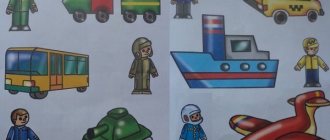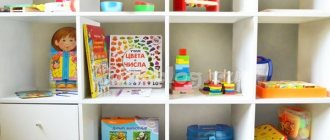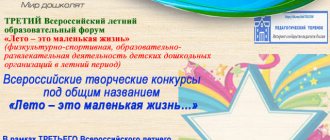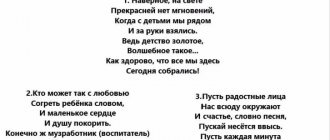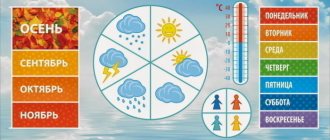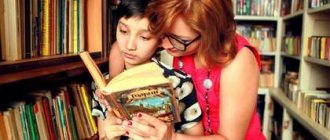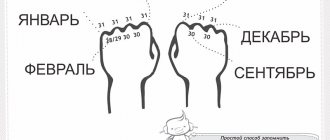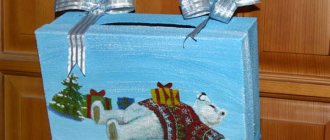If at the age of two the baby is still an observer, then at the age of three he becomes an inquisitive explorer of the world around him. The difficult task falls on the shoulders of mom and dad - to help the child gain the necessary experience and knowledge and at the same time, protect him from possible injuries. It is important to ensure that the baby develops harmoniously, both physically and mentally, and intellectually.
Features of development of children 3 years old (“Munich diagnostics”)
On the one hand, three-year-old children are constantly working motors. They cannot sit still for a long time and quickly change one type of activity to another, since attention at this age is not yet sufficiently developed. On the other hand, 3-year-old children can safely be called conservatives: they like rules, they quickly get used to the daily routine, and preferences in food and games appear. This craving for constancy is explained by the work of basic personality mechanisms that are aimed at ensuring security. What is familiar and predictable to a child causes less fear than what is new and unknown. This age is also notable for the fact that the baby becomes more independent, can defend his interests, stubbornness and whims appear.
To qualitatively assess the psychomotor, speech and communication skills of children, the “Munich Functional Developmental Diagnostics” was created in 1997 in Munich. According to it, at 3 years old a child should be able to do the following:
- Go up and down stairs;
- Jump on one and two legs;
- Catch and kick the ball;
- Do different movements at the same time (for example, shaking your head and clapping your hands);
- Step over obstacles;
- tear paper;
- Sort objects by color, size, shape;
- Build towers from cubes;
- Play games with simple rules;
- Name your gender;
- Orientate yourself in space.
At the age of 3 years, children experience a big leap in physical development. The baby can already run quickly, jump, squat, and turn his body. His movements become more precise and coordinated, and his reaction speed increases. Orientation in space also improves significantly (it is often better developed in boys than in girls of this age).
Daily routine and care for a three-year-old child
The baby becomes very active, and it is important to adhere to a daily routine so that the child has enough strength. Of course, the routine of a child who goes to kindergarten will differ from the routine of a child who does not attend preschool, but an approximate daily routine for three-year-olds could be like this:
| 07.00 | Climb |
| 07.30 | Hygiene procedures, exercise |
| 08.00 | Breakfast |
| 08.30 | Educational games and activities, help with everyday life |
| 10.00 | Walk |
| 12.00 | Dinner |
| 12.30 | Daytime nap |
| 15.00 | Awakening |
| 15.30 | Afternoon snack |
| 16.00 | Outdoor and educational games |
| 18.00 | Walk |
| 19.00 | Dinner |
| 19.30 | Quiet activities |
| 20.30 | Hygiene procedures |
| 21.00 | Night sleep |
⠀
Development of fine motor skills in children 3 years old
- Drawing. At 3 years of age, drawing development is at the scribble stage. Despite the fact that the drawings can sometimes turn out to be shapeless, the child puts his own meaning into them. Three-year-olds with well-developed fine motor skills can already draw simple shapes (circle, square, lines). The drawing of a person in 3-year-old children turns out to be primitive, but it already contains a head, body, legs and arms.
- Ability to unfasten zippers and buttons. Although a 3-year-old child still cannot fasten a button or zipper himself, he has already learned how to unfasten them. Encourage your child's desire for independence, because fastening and unfastening various clasps not only perfectly develops fine motor skills, but also stimulates the development of thinking.
A three-year-old child has most hygiene skills. He knows how to wash himself, wash his hands, go to the potty, undress, and tries to eat carefully at the table.
- Toys that require developed finger motor skills. Usually at this age children like to play with small objects; puzzles, construction sets, lacing, and mosaics are used. When giving your child such toys, do not forget about safety precautions and do not leave the child unattended while playing.
- Finger games. Finger gymnastics can be a fun exercise for developing your baby’s fine motor skills. You can find ideas for finger games in the video:
Bubble
novate.ru
Soap bubbles are loved by children of all ages. They can be used at home, or combined with bathing. In the article Do-it-yourself soap bubbles: recipes and tips, we dwelt in detail on mixtures and devices for blowing soap bubbles yourself.
After studying the article Top 10 tricks with soap bubbles for children, you can organize a soap show without leaving your apartment.
www.youtube.com
Give your child a place where he can play with soapy liquid without fear - and he will be occupied for at least 15-20 minutes. You can first cover the floor with oilcloth or move to a tiled floor so that you can easily clean everything up later.
Development of thinking at 3 years old
The famous psychologist J. Piaget believed that the thinking of three-year-old children is structured in such a way that they cannot look at the situation from the outside. This phenomenon is called egocentrism of thinking. In addition, children at 3 years old are not yet able to fully understand the connections between events or phenomena, so there is little logic and a lot of imagination in the child’s thinking.
It is at this age that a very important transition occurs from visual-effective to visual-figurative thinking. If in early childhood a child learned about the world through actions with objects, feeling them, tasting them, now, on the threshold of preschool age, children usually acquire the ability to act with images of objects that are preserved in their memory. A child of three years old can think about something that is not within sight. This is an extremely important step towards logical thinking.
Cognitive activities:
What should the baby learn?
- know some animals;
- know some plants;
- distinguish a vegetable from a fruit, a berry from a mushroom;
- know and understand natural phenomena (rain, snow, sun);
- distinguish the time of year and day.
Prepare images of various animals, birds and plants. Try to choose images of those plants and animals that you can find in your area. Then during your next walk you can show them to your baby and tell them some interesting facts and stories about them.
Can three-year-olds be attentive?
The ability to concentrate in 3-year-old children is low, which is why they quickly switch from one thing to another. If you force your baby to do the same thing for a long time, that is, more than 10 minutes, the nervous system will be overloaded (an external sign of which is hysterics). The attention of 3-year-old children is selective; they pay attention only to what is attractive to them.
When working with your child at home, pay attention to the baby’s condition. At this age, children get tired quickly. Therefore, all classes should be held in a relaxed playful manner. To see how you can interest a child, watch the video.
Home huts
remoskop.ru
You don't have to buy an expensive wigwam or pitch a tent in the center of the living room to keep your baby busy with play. Build a house from scrap materials.
spim.ru
A hut made of blankets is a simple and at the same time ingenious invention for a child or a group of children. Hang a garland, dim the lights - that's romance. In such a house you will probably want to read a book, hug each other, and tell in a half-whisper an invented horror story or adventure story. You can even have an overnight picnic.
otvet.imgsmail.ru
You can make or order very cute wigwams yourself that will fit into the interior of any children's room. If you take care of a warm bedding, you can even sometimes allow the child to sleep in such a house.
www.sidimdoma.net
Development of memory and imagination in children 3 years old
Children of this age have the best developed emotional memory. A 3-year-old child remembers well what evokes vivid emotions and impressions in him. It's no secret that preschool children have very developed imaginations. Most of the time, three-year-old children are in the world of their fantasies. However, this also has a negative side; children can be very impressionable, which is why many fears arise that are characteristic of preschool age (fear of the dark, dogs, thunderstorms, etc.).
Mental development of children at 3 years old
By the age of 3, children usually have many new skills and abilities in the field of mental abilities. A three-year-old child should be able to:
- Compare and sort objects by size, length, shape, color;
- Find the same object;
- Compose puzzles from 4 parts;
- Name primary colors and shades;
- Know poems and songs;
- Make up a story based on a familiar picture with the help of an adult;
- Know the names of some trees, dishes, furniture, animals, clothes, transport, vegetables and fruits;
- Know basic geometric shapes;
- Tell him what he did during the day.
Mathematics
My daughter understands quantity, knows numbers. We count the apples in the store, the number of people in the family and the days in the week. I have prepared materials for comparing quantities and symbols, and I plan to continue the lessons in the future - I see that the child does it with pleasure.
Grandma also has numbers and round circles on magnets. Recently we came to visit them, I attached the numbers to the refrigerator: to number 1 - one round piece, to number 2 - two round pieces. She put the rest in a bowl, and Julia herself attached them to the numbers.
Using the clock puzzle, the child learned to count and understand that numbers can express quantity and order. In the living room there is a clock with hands, and opposite it there is an electronic clock with numbers. Already going to compare the values, but so far only 12 is unmistakably obtained
Using this set we study the numerical meaning of numbers. Next to each number is the number of items.
Speech development in three-year-old children
The speech of 3-year-old children is actively developing, kids develop an interest in language, they love to chat and talk about everything they see. Here are the main directions of speech development of three-year-old children.
- Enrichment of vocabulary;
- Phrasal speech;
- Ability to conduct dialogue (the child knows how to ask and answer questions);
- The appearance of polite words.
The speech itself of a three-year-old is far from perfect. Babies at this age usually have difficulty pronouncing hissing and sonorant sounds. At 3 years old, children often spell sentences incorrectly, confuse words, and miss words.
Speech classes:
What should the baby learn?
- his sentences should consist of 5-6 words;
- he can say his first name, last name, and the names of his parents;
- knows how to distinguish objects by characteristics;
- understands the meaning of actions (walk, run, cry, search, play, etc.)
At home, you can invite your child to collect cubes or cards with letters so that he learns to collect words. In three-year-olds, the memory is not yet particularly developed, so give the tasks not difficult so that he can easily collect the hidden word.
Communication skills
If your child used to play alone, now the company of his peers is important to him. Children at 3 years old are usually very sociable and outgoing. According to the classification of M.I. Lisina for this age is characterized by an extra-situational-cognitive form of communication. This means that communication most often occurs against the backdrop of joint activities to get to know the world. At the same time, it is very important for a 3-year-old child to feel approval and sympathy from loved ones.
Household activities:
What should the baby learn?
- must be able to dress and undress independently;
- cut out various pictures;
- color pictures;
- must understand the basic rules of accuracy.
Parents often hang posters and pictures around the house with hygiene rules. Every time a baby passes by, he remembers and remembers that he needs to wash his face and brush his teeth regularly.
Try to develop creative skills in your son or daughter. Once every 1-2 months, organize holidays or celebrations at home, for which you need to prepare costumes, decorations, etc. Involve your baby in the preparation. Let him help you.
If you don’t have enough time to organize holidays, make crafts together from different materials. Remember to use pine cones, leaves, acorns and other natural materials.
conclusions
By the age of 3, a child develops many new skills and abilities. The baby becomes more and more independent, he gradually learns to take care of himself. A three-year-old child controls his body quite well; he can maintain balance, run, jump, and play ball. The baby’s cognitive abilities also improve: thinking becomes imaginative, memory, attention, speech, and imagination develop. Communication with people reaches a new level, children become interested in communicating with peers.
Hide and seek
Brain development occurs through movement. It is important for a child to move in space. This is how he masters in practice the concepts of “higher”, “lower”, “closer”, “further”, “to the right”, “to the left”. And the easiest way to understand this is through your own body.
www.rastishka.ru
- Why you need to play hide and seek with children: games for kids 2-3 years old


